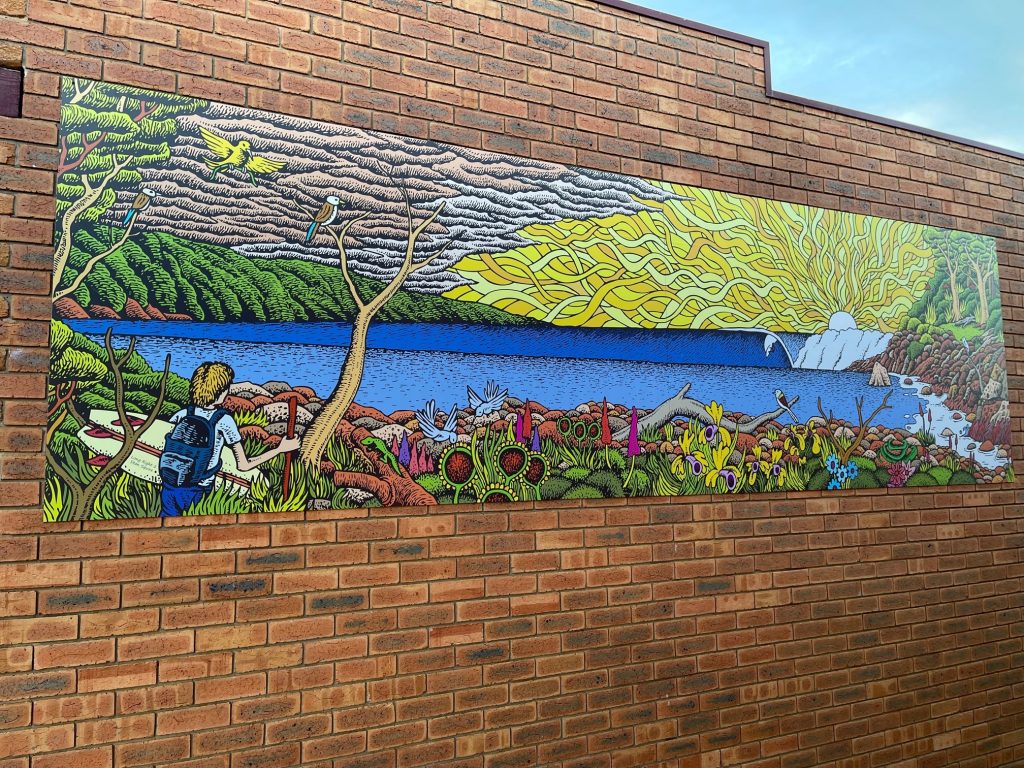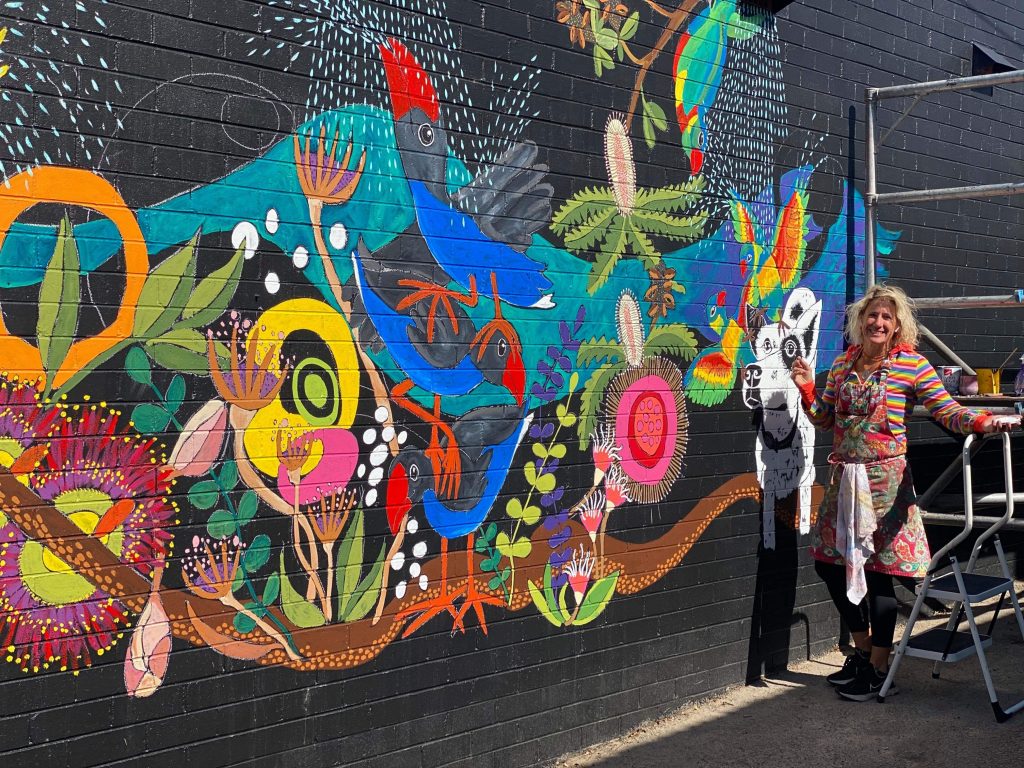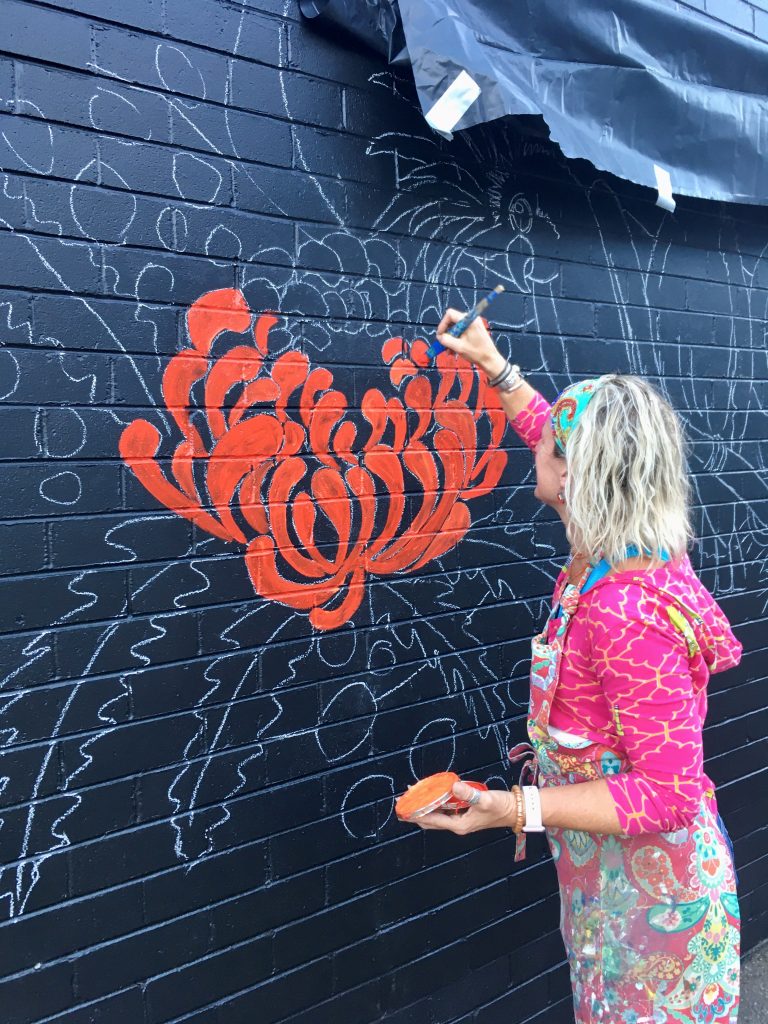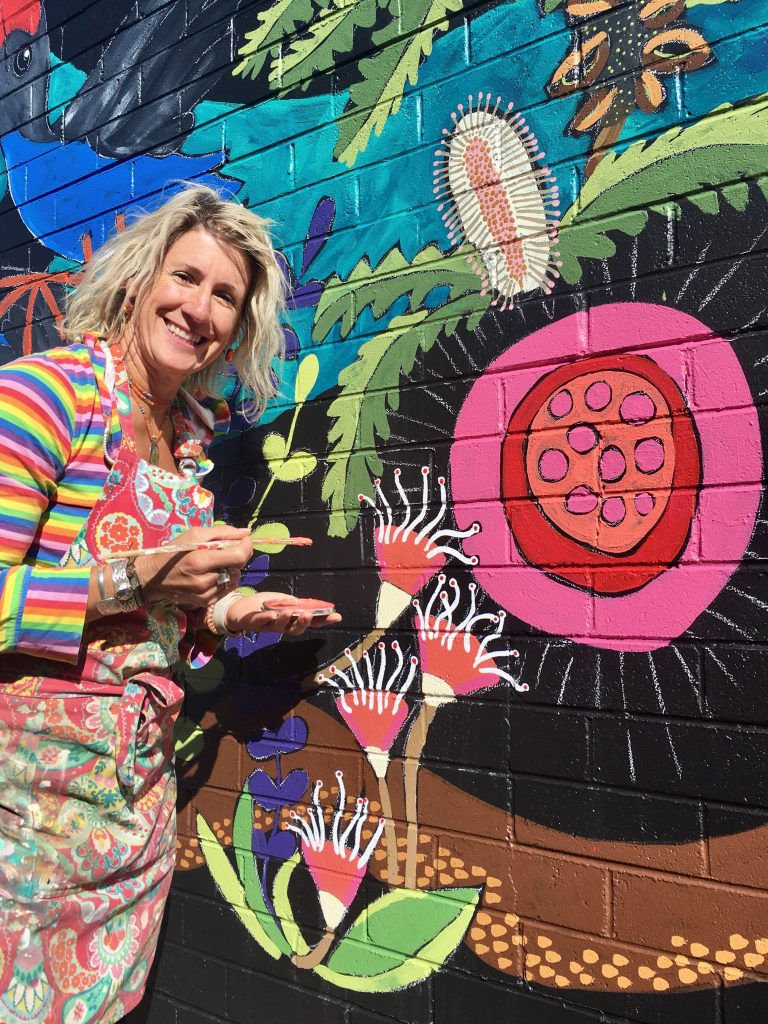Annual Review stories Community stories: 21 October 2021
Yuin Nation
Professional artists from the Bega Valley are invigorating Pambula Village with vibrant and colourful large-scale artworks, thanks to a bushfire recovery initiative.
Six commissioned pieces now complement a 22-site historic walking tour and are providing a boost to morale, employment and tourism.
The Bega Valley LGA was among the most impacted by the 2019/20 Black Summer bushfires, with 465 houses destroyed, 1,279 rural landholders impacted and around 60 per cent of the area burnt. Pambula has also experienced drought and COVID-19. The cumulative effects of all this have resulted in the loss of livelihoods, employment, prospects, wealth, environment, sense of security and mental wellbeing.
The Waislitz Family Foundation, in partnership with Australian Community Media, joined forces with FRRR after the Black Summer bushfires to support recovery. The Pambula arts project was granted $25,000 through FRRR’s Strengthening Rural Communities program, funded by the Waislitz Family Foundation in partnership with Australian Community Media.
Pambula Business Council President Michelle Pettigrove said the road back from the region’s losses is long and daunting and the ongoing Pambula Art Project gives this community a strong sense of unity, pride and direction.
“There is a discernible buzz on the street, tourists talk about the great community spirit of the town,” she said.
Artists get to exhibit their work to a large audience while helping increase Pambula’s profile and attract visitors to the Village and extended Bega Valley region. It’s boosting sales for local businesses and creating a more culturally vibrant community.
The Art Project was also mentioned frequently by voters when Pambula was named a finalist in the NSW Small Top Tourist Town awards.
While many buildings in Pambula have some historic significance, plain brick walls of newer buildings were identified as perfect ‘canvases’. Some artworks were painted directly onto buildings, and a clever solution using Laminex and aluminium panels meant others could be installed to building facades without causing damage.
Ms Pettigrove said the artworks were not designed to overpower the existing streetscape “but rather to illuminate and amplify Pambula’s historic, cultural and environmental identity, including the history and connection to country of the Yuin People – the original custodians of our region”.
A self-guided history walking tour map has also been produced, featuring 22 of Pambula’s historic buildings and sites to shine a spotlight on the fascinating and quirky history of the village and local identities. Pambula was the birthplace of Sir William McKell, the second Australian-born Governor General, and his home is now an art gallery. Syms Covington, who served with Sir Charles Darwin on ‘The Beagle’ retired to Pambula and continued to send Darwin samples of Australian flora and fauna for many years. Covington then served as postmaster in Pambula and his house is now a popular restaurant/gallery.
Future plans for the project include adding and celebrating more Yuin Nation history in the original self-guided History Walk, following ongoing extended consultation with both the Bega Aboriginal Land Council and the Twofold Aboriginal Corporation.






